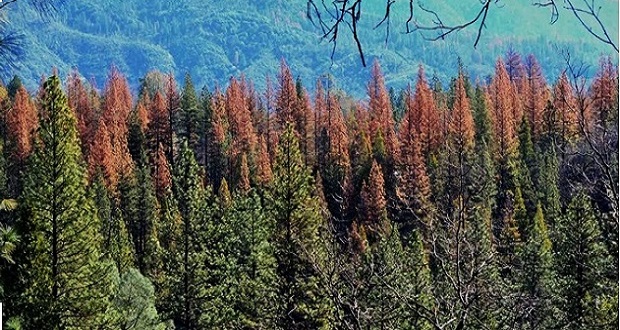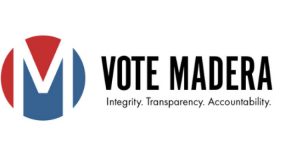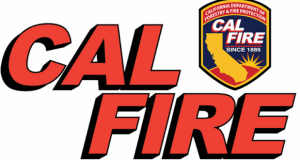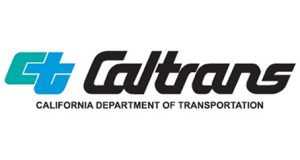SACRAMENTO – Cal Fire announced Wednesday it will be awarding nearly $16 million for fire prevention grants to local fire departments and fire safe councils to reduce the threat of large wildfires.
The 2016-2017 State Responsibility Area Fire Prevention Fund and tree mortality grants are aimed at reducing the threat wildfires as well as dead and dying trees in and around communities within the State Responsibility Area (SRA).
“In just the last couple of weeks, we have seen how destructive this fire season has already been and the critical role fire prevention projects play in helping us protect lives and property,” said Chief Ken Pimlott, Cal Fire Director. “As the drought continues, and millions of more trees die off, we must take every step to prepare our neighborhoods and communities from wildfire.”
The 2016-2017 Cal Fire grants have a one-time appropriation of $10 million that is intended to address the risk and potential impact of wildfire and dead and dying trees on habitable structures in the SRA. The grants also provide a one-time allocation of $6 million for fire prevention projects that are not limited to the SRA.
The target audiences for the grants include, but are not limited to, local government agencies, fire districts and fire safe councils to augment recent fire prevention projects. The grant amount will be limited to a maximum of $200,000 per project. This will allow for broad distribution of grant funds to local government agencies and organizations throughout the State.
The 2016-2017 grant applications are due Sept. 28, by 3 p.m.
Cal Fire is encouraging a wide range of applicants throughout the state to apply for this funding. Interested parties can get more information at Cal Fire’s grants webpage at: http://www.fire.ca.gov/grants/grants.php.
2016-2017 State Responsibility Area Fire Prevention Fund (SRAFPF) and Tree Mortality (TM) Grant Program
What – The State Responsibility Area Fire Prevention Fund (SRAFPF) and Tree Mortality (TM) Grant Program has $15.75 million available for projects that focus on supporting local efforts to remove dead and dying trees that pose a threat to public health and safety and for projects that reduce the wildfire threat to habitable structures within State Responsibility Areas (SRA).
Why – The SRAFPF and TM Grant Program provides funding for projects related to the removal of dead or dying trees, hazardous fuel (vegetation) reduction, fire prevention education, and fire prevention planning. Projects funded by the SRAFPF and TM grants will reduce the risk of fire ignition and spread in and adjacent to communities, educate owners of habitable structures about wildfire risks, allow for strategic, long-term planning to reduce the risk of wildfire to communities in the SRA throughout the State, or remove dead or dying trees that pose a threat to public health and safety.
Who – Eligible grantees may be local entities including, but not limited to, local government, fire districts, community services districts, water districts, and special districts with SRA within their jurisdiction, or certified local conservation corps, Fire Safe Councils, or other nonprofit organizations organized under Section 501(c)(3) of the federal Internal Revenue Code. Native American Tribes are eligible for the Tree Mortality Grants but are generally not eligible for the State Responsibility Area Fire Prevention Fund Grants, but can work with local districts or non-profit organizations to include desired project work in a grant proposal.
Project Types and Activities – Qualifying projects and activities include those related to hazardous fuel reduction, fire prevention planning, fire prevention education, and removal of dead, dying, or diseased trees. Examples of qualifying projects and activities include, but are not limited to, the following:
Hazardous Fuel Reduction
- Removing dead and dying trees
- Vegetation clearance in critical locations to reduce wildfire intensity and rate of spread
- Creation or maintenance of fuel breaks in strategic locations, as identified in Cal Fire Unit Fire Plans, a Community Wildfire Protection Plan, or similar strategic planning document
- Removing ladder fuels to reduce the risk of crown fires
- Community level fire prevention programs, such as community chipping days, roadside chipping, and green waste bin programs
- Elective tree removal (thinning) to improve forest health to withstand wildfire
- Modification of vegetation adjacent to roads to provide for safer ingress and egress of evacuating residents and responding emergency personnel
- Reduction of fuel loading around critical firefighting infrastructure, including, but not limited to, fire hydrants, water drafting locations, and staging areas
Fire Prevention Education
- Fire prevention public education
Fire Prevention Planning
- Wildfire risk or related mapping
- Creation of strategic wildfire planning documents, such as a Community Wildfire Protection Plan (CWPP)
Removal of Dead, or Dying Trees
Must support local efforts to remove dead and dying trees that pose a threat to public health and safety.
- Dead and dying trees greater than 10” in diameter and 20 feet in height and
- Dead and dying trees are reasonably accessible by equipment/machinery and
- Dead and dying tree removal within 300 feet of permanent structures and pose a structural threat to the residence. This does not include moveable or temporary sheds and outbuildings, or carports. or
- Dead and dying tree removal within 300 feet of serviceable roadways and pose a structural threat to roadways. or
- Poses a threat to public or private infrastructure.
Projects should be located in a “Priority County” as identified by the Tree Mortality Task Force.
Examples of non-qualifying project types and activities
- Purchase of capital equipment greater than $100,000.
- Installation, creation, upgrade, or maintenance of fire protection features, such as roads, bridges, structure’s or water storage facilities.
- Any project submitted by a State, Federal, or for profit company or corporation.
- Projects or activities with indirect costs greater than 12 percent.
- Projects or activities utilizing Cal Fire staff without corresponding reimbursements or requests seeking funding for services already provided by Cal Fire.
- Removal of dead and dying trees that do not pose a threat to public health and safety.
How to apply –
Step 1- Project Application: Due no later than Sept. 28, 2016, at 3 p.m. The application must be completed in full at the time of submission. An incomplete application may result in disqualification of the application.
Step 2- Grant Selection: mid-November, 2016. Successful Grant Applicants will be notified in this stage.
Step 3- Grant Agreement: Due no later than Jan. 31, 2017. During the Grant Agreement stage, the project applicant will prepare and provide additional administrative detail for the complete agreement package.
Step 4- Grant Award: late January to Feb. 2017. In the Grant Award stage, official signatures are submitted and the grant is awarded.
http://calfire.ca.gov/fire_prevention/fire_prevention_fund_grants
When mailing in the forms, the address is:
Department of Forestry and Fire Protection
Attention: Grants Management Unit-SRAFPF & TM Grants
P.O. Box 944246
Sacramento, CA 94244-2460
Should you need additional information, you may contact a CAL FIRE representative at 916-445-8131 or SRAFPFGrant@fire.ca.gov.
# # #
MEDIA NOTES Photos: Photos of fire prevention and fuel reduction projects: https://www.flickr.com/photos/calfire/albums/72157666122688975




